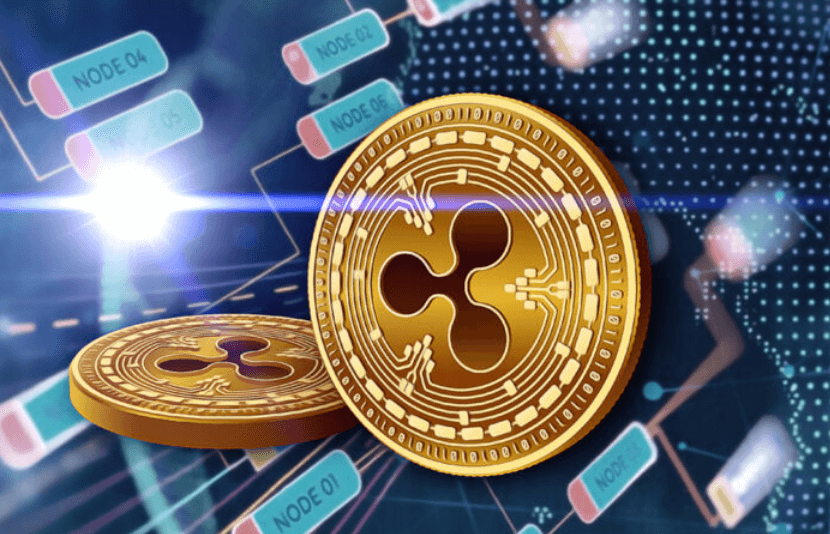
Exploring XRP Price CAD and Its Potential to Compete with Traditional Currencies
Cryptocurrencies have made a significant impact on the financial world in recent years, and among the most notable is XRP. Created by Ripple Labs, XRP was designed to facilitate fast and inexpensive cross-border transactions. As the world of digital finance continues to evolve, XRP has garnered attention not only for its technological advancements but also for its ability to potentially compete with traditional currencies. One area where this potential is particularly evident is in the XRP price CAD, as the Canadian dollar (CAD) serves as a valuable benchmark for understanding the cryptocurrency’s position in the global market.
In this article, we’ll explore XRP’s market dynamics, particularly in relation to the Canadian dollar, and discuss its potential to challenge traditional currencies in the global financial landscape.
Understanding XRP and Its Role in the Cryptocurrency Market
Before diving into XRP’s potential to compete with traditional currencies, it’s essential to understand what XRP is and how it functions within the broader cryptocurrency ecosystem. XRP is a digital asset designed primarily for facilitating instant and low-cost international transactions. Unlike many cryptocurrencies that rely on mining (such as Bitcoin), XRP uses a consensus algorithm to validate transactions. This makes it both more energy-efficient and faster than many other digital currencies.
Ripple Labs, the company behind XRP, envisions its use primarily for cross-border payments. The goal is to enable financial institutions and payment providers to move money across borders without the need for intermediaries, which traditionally make cross-border payments slow and expensive.
XRP’s value is often influenced by its adoption by financial institutions and its ability to offer faster, more affordable solutions than traditional payment systems. As a result, the XRP price CAD is not only a reflection of XRP’s value in the cryptocurrency market but also a gauge of its competitiveness in the world of international finance.
What Determines XRP Price CAD?
The price of XRP in Canadian dollars (XRP price CAD) is influenced by various factors. These include the overall performance of the cryptocurrency market, investor sentiment, and Ripple’s success in partnering with banks and financial institutions worldwide. The adoption of XRP by major payment providers such as MoneyGram and Santander has already had a significant impact on its price.
Additionally, broader economic factors, including interest rates, inflation, and government regulations, can also affect the price of XRP in relation to the Canadian dollar. The XRP price CAD is often seen as a barometer for the growing interest in using cryptocurrencies as a store of value or as a medium of exchange in the financial sector.
XRP and Its Potential to Challenge Traditional Currencies
Efficiency and Speed
One of the key features that set XRP apart from traditional currencies is its speed. While bank transfers can take several days, XRP transactions are typically completed in just a few seconds. This speed is achieved through Ripple’s consensus algorithm, which eliminates the need for the energy-intensive mining process used by other cryptocurrencies. As the demand for faster cross-border transactions increases, XRP could become an attractive alternative to traditional currency systems, which rely on slow and costly intermediaries.
Lower Transaction Costs
Traditional currencies, especially when used for international transactions, often come with high fees. Banks, currency exchange platforms, and payment providers typically charge a substantial markup to facilitate cross-border payments. XRP, on the other hand, offers significantly lower transaction costs due to its efficient transaction protocol. By bypassing intermediaries, XRP could potentially lower the cost of international payments for businesses and consumers alike, providing an alternative to traditional currencies that is both faster and more affordable.
Global Accessibility
Another area where XRP has an edge over traditional currencies is its ability to be accessed globally. Cryptocurrencies, in general, are not bound by the geographical limitations that traditional currencies are. This means that anyone with an internet connection can access XRP and participate in cross-border transactions. This global accessibility is a significant advantage in a world where more and more people are engaging in international trade, travel, and investments.
Resilience Against Inflation
Traditional currencies, such as the Canadian dollar, are subject to inflation, which can erode their purchasing power over time. Governments often print more money to manage their economies, which can devalue the currency. Cryptocurrencies, including XRP, are typically designed with a fixed supply or a controlled inflationary model. This characteristic makes them more resilient to inflationary pressures compared to fiat currencies, giving them an edge as a store of value in uncertain economic times.
Challenges to Competing with Traditional Currencies
While XRP has significant potential, there are challenges that it must overcome to compete with traditional currencies, especially in terms of widespread adoption.
Regulatory Uncertainty
The regulatory landscape surrounding cryptocurrencies is still evolving, and governments around the world are working to develop frameworks for managing digital assets. XRP, in particular, has faced legal challenges, most notably with the U.S. Securities and Exchange Commission (SEC), which filed a lawsuit against Ripple Labs, alleging that XRP is an unregistered security. This ongoing legal battle creates uncertainty for investors and could hinder XRP’s ability to fully realize its potential.
Volatility
Like most cryptocurrencies, XRP is subject to significant price volatility. While the XRP price CAD can rise quickly, it can also drop just as rapidly. This volatility makes XRP a risky investment for those looking for stability. Traditional currencies, in contrast, are generally more stable, and their value is less susceptible to drastic fluctuations. As a result, XRP may not yet be viewed as a reliable store of value by all investors or consumers.
Limited Acceptance
Despite its growing presence in the financial sector, XRP has yet to achieve widespread acceptance among businesses and consumers. While it is used by some banks and payment providers, it has not yet become a standard form of payment for goods and services. For XRP to challenge traditional currencies effectively, it must gain broader adoption and become a more widely recognized means of exchange.
Conclusion: The Future of XRP and Traditional Currencies
The XRP price CAD is an important indicator of XRP’s potential in the global financial ecosystem. With its speed, efficiency, and low transaction costs, XRP is positioned to compete with traditional currencies in areas such as cross-border payments and international trade. However, challenges such as regulatory uncertainty, price volatility, and limited acceptance must be addressed for XRP to realize its full potential.
While XRP may not yet be ready to replace traditional currencies, its ability to offer a faster, cheaper, and more accessible alternative to fiat currencies makes it an exciting contender in the world of digital finance. As adoption increases and the regulatory landscape stabilizes, XRP could become a key player in the future of global finance, competing alongside traditional currencies like the Canadian dollar.




